Sound piece developed by Omaha artist Derek Higgins while researching the sounds of the Bob Kerrey Pedestrian Bridge with Di Mainstone, for her Human Harp project. Both were Bemis Center artists in residence. 2014. Video by Make Believe New Media.
Tag Archives: Omaha
Human Harp: The Bridge by Dereck Higgins
Cey Adams | LOVE mural
Cey Adams: LOVE mural
At my invitation, NYC native, Cey Adams, undertook a residency at the Bemis Center for Contemporary Art in Omaha, Nebraska. A key output of his time as a Bemis Center artist-in-residence was a mural commission in the North Omaha cultural precinct at 24th and Lake Streets. Adams worked with local artists Dereck Higgins, Ben Jones, Aaryon Williams, and Olivia Groth, and with the support of students from Omaha-area high schools to realize the work. Local artist Michelle Troxclair provided logistical support and photographers John Shartrand & Mike Machian documented the process.
As described by Adams, the 24th Street Love Mural captures the hopes of the community for the future while also referencing its past, in the form of famed North Omaha jazz musician Preston Love.
A special thanks to the Omaha Public Art Commission and to Love’s Jazz & Art Center for their support of the project.
Residency
In addition to d eveloping and realizing the LOVE mural, Adams developed a new body of work as part of his studio residency at Bemis Center. Titled Trusted Brands. This work was subsequently exhibited at Rush Philanthropic Arts in New York.
eveloping and realizing the LOVE mural, Adams developed a new body of work as part of his studio residency at Bemis Center. Titled Trusted Brands. This work was subsequently exhibited at Rush Philanthropic Arts in New York.
Adams also realized a workshop series The Art and Design of Hip Hop at Carver Bank, targeted at North Omaha youth, and spoke at schools and youth centers across Omaha on his work and career. Cey also found time to mentor students at the concurrent Urban Design Lab project at Bemis Center (led by resident artists Chloe Bass and Teal Gardner). Journalist Casey Logan captures his encounter with local student, Solomon Washington, in A Laboratory Experience at Bemis Center in Omaha Go.
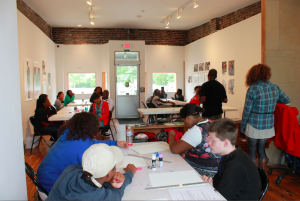
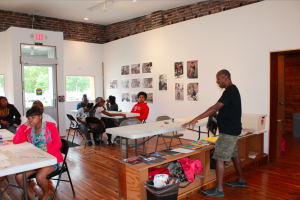

Adams returned to Omaha to present an additional body of work, Brand New, at The New BLK Gallery expanding upon the work he did during the residency, and building on the deep connections he made in the city.
Adams talks with local news station KTMV about the project.
Emilie Baltz | Circuit of the Senses
Emilie Baltz: Circuit of the Senses
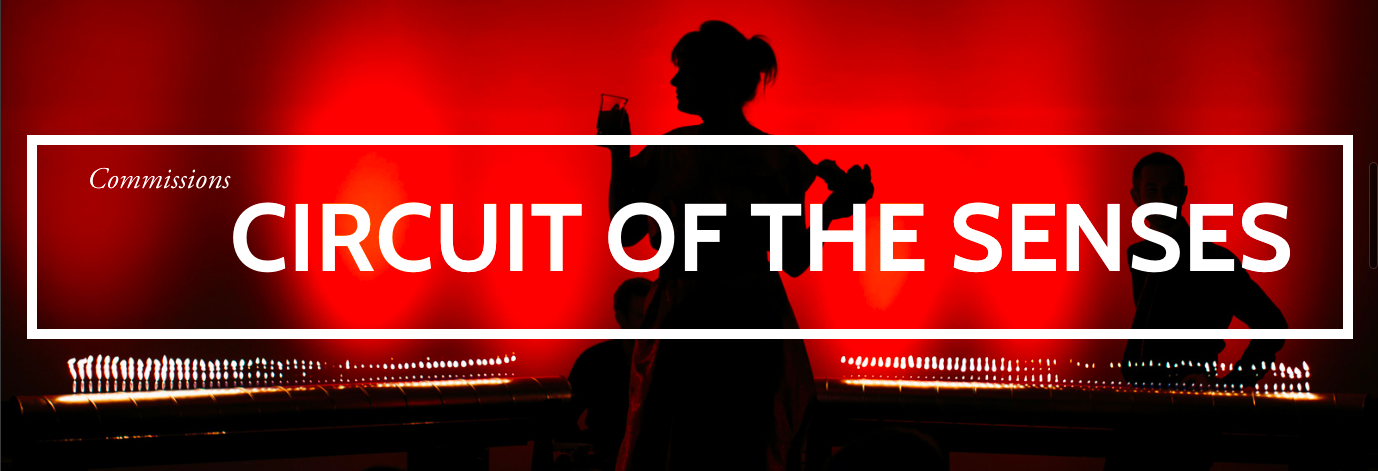
Emilie Baltz: Circuit of the Senses
Participatory Immersive Dining Experience
Bemis Center for Contemporary Arts
Omaha, Nebraska
November 2014
In 2014, I invited artist Emilie Baltz to undertake a residency at the Bemis Center for Contemporary Arts in Omaha, Nebraska, to develop a work that would engage Bemis patrons and community members to re:imagine the role that art plays in daily life by transforming a fundraising gala dinner, and a community party, into an artwork that was simultaneously a creative playground filled with edible delights. Inspired by Kafka’s definition of theater as “melting the ice within, of awakening dormant cells, of making us more fully alive, more fully human, at once more individual and more connected to each other,” Circuit of the Senses was a 5-course interactive dinner conceived by Emilie during her residency, in collaboration with chef Paul Kulik – chef and restaurateur at Boiler Room and le Bouillon, mixologist Luke Edson and local artists, Amanda DeBoer Bartlett, Dereck Higgins, Mark Powers, Tbd Dance Collective, Jason Webb and Bemis resident Claudia Bitran.
This 120 person dinner party was held in the main galleries of the Bemis Center engaged gallery, completely transformed by Emilie and her collaborators into a magical playground. Guests were assigned individual paths through the galleries and encounter interactive courses inspired by the five human senses: roasting marshmallows and hot dogs on singing grills, eating from bowls spinning on transparent ice tables, feeding from a live table and dining on clouds of rosemary vapor. Participants were encouraged to touch, taste, smell, see and listen together as a community.
The Circuit embodied Emilie’s vision of creating experiences that stimulate playful, multi-sensory interaction that re-train adults in childlike discoveries of the world and reawaken curiosity in the everyday.
Produced by Bemis Center for Contemporary Arts.
Curated by Amanda McDonald Crowley.
- ©Emilie Baltz
- ©Colin Conces
- Touch. ©Colin Conces
- Touch. ©Emilie Baltz
- Touch. ©Emilie Baltz
- Sight. ©Emilie Baltz
- Sight. ©Emilie Baltz
- Sight. ©Colin Conces
- Sound. ©Emilie Baltz
- Sound. ©Colin Conces
- Smell. ©Emilie Baltz
- ©Emilie Baltz
- Touch. ©Emilie Baltz
- Sight. ©Emilie Baltz
- Sound. ©Emilie Baltz
- Smell. ©Emilie Baltz
FOOD THEATER
Exhibition
December 16, 2014–May 23, 2015
Gallery 1
In December, following the “Circuit of the Senses” dinner Baltz choreographed “Circus of the Senses,” a cocktail party hosted in the Okada sculpture facility across the road from the Bemis Center.
The resulting exhibition FOOD THEATER was realized to showcase both projects.
Baltz’s vision was the transformation of the everyday into the exceptional by bringing together local creators, ingredients, and community members to participate in immersive, multi-sensory spectacles that reimagine the role that food plays in our lives.
The exhibition showcased the props, sets, costumes and imagery of these projects as well as creating a stage for future activation with the central table serving as a space for community engagement, education and celebration.
The following videos, created by Make Believe New Media, and commissioned by the Bemis Center documented the ‘Sound’ and ‘Smell’ elements of both the Circuit of the Senses and the Circus of the Senses, and were included in the FOOD THEATER exhibition.
Food Theater by Emilie Baltz: The Sound Room from Make Believe New Media on Vimeo.
Food Theater by Emilie Baltz: The Smell Room from Make Believe New Media on Vimeo.
Chloë Bass & Teal Gardner | Urban Design Lab
Urban Design Lab
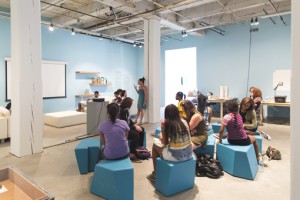 Urban Design Lab
Urban Design Lab
Bemis Center for Contemporary Arts, Omaha, NE
July 15 – November 1, 2014
In Summer 2014, I invited Chloë Bass and Teal Gardner to participate in the Bemis Center artist-in-residence program where they collaborated with 18 local researchers to shed new light on the nature of our urban landscape. Recruited from local high schools, the researchers first completed research for the Department of Local Affairs. Each teen filled out one of the templates listed below, sharing information about his or her experience of Omaha: making a map, designing a pamphlet, writing a review or offering advice. The shared information ranged from an account of where one student’s relatives lived in the context of her neighborhood to advice about how (and how not to) use particular parks for social activity.
Once trained in the Department of Local Affairs’ interactions and processes, researchers went into the community and asked local residents and workers to share information with the Department. One research day focused on the Old Market area, where teens engaged people at the Omaha Public Library, a coffee shop, an antique store and on the street. The second research day was focused in North Omaha, where teens collected information from people at Carver Bank, Love’s Jazz and Art Center and the Union for Contemporary Art.
Bass then organized the collected materials into a subjective guidebook. The Department of Local Affairs office installation is on view as part of the Urban Design Lab exhibition at the Bemis Center.
The Lab participants, who were recruited from local high schools, toured various parts of the city as field researchers and then synthesized their data in the Bemis’s gallery space, which consists of two parts: Chloë Bass’s The Department of Local Affairs and Teal Gardner’s Reading the City.
At the end of each week of data collection through Department of Local Affairs and Reading the City, the researchers worked as teams to develop as an intentional form of play. They were charged with the task of repurposing the sights and sounds they recorded into new tools and bodies of work, which will be offered to other visitors and participants in this space throughout the exhibition.
Taken as a whole, the Urban Design Lab provides deep, media-rich data about the city in which we live, as well as a new synthesis about the meaning of that data. As a place where new ideas and work are created, the Lab also echoes the ongoing creative processes that are at the heart of the Bemis Center’s internationally-recognized artist residency program.
The outcomes of research were shared at a Presentation Day on August 5, 2014
Curriculum
Department of Local Affairs
Reading the City workshops
Maker Days
Chloë Bass also realized her Department of Local Affairs over the summer of 2014 with the Laundromat Project, and also wrote a series of posts, Learning Omaha, on Hyperallergic during her residency.
Press:
“A laboratory experience,” by Casey Logan, Omaha World-Herald (behind pay-wall) and on Omaha.com (available online) September 2014.
About the Artists
Chloë Bass
In creating conceptual art (performances, situations, installations, publications), Chloë Bass’s goal is to investigate the potential of the everyday as a catalyst for intimacy. She is captivated by the common denominators of the human experience, such as the things that people always do, and she seeks to highlight the seemingly normal as a means of questioning its stability. Bass’s primary medium is people, and she uses performance as a metric to evaluate the successful function of interaction and engagement – person to person, and between people and their surroundings – rather than a spectacle for passive enjoyment. The artist has been a resident at POGON (Zagreb, Croatia), D21 Kunstraum/5533 art space (Leipzig, Germany and Istanbul, Turkey) and Eyebeam (NY, NY) and has shown her work at venues such as the Neuberger Museum (Purchase, NY), Künstlerhaus (Stuttgart, Germany), Kunstkammer AZB (Zürich, Switzerland) and the Contemporary Art Institute of Detroit (Detroit, MI). Selected profiles of her work have appeared in BOMB, Entorno, ArtInfo, Art Observed, the New York Times and Hyperallergic. She is the recipient of a 2013 Fellowship for Utopian Practice from Culture Push and a 2011 & 2012 Rema Hort Mann Foundation Individual Artist Grant Nominee. The artist earned her BA in Theater Studies from Yale University and an MFA in Performance and Interactive Media Arts (PIMA) from Brooklyn College.
Teal Gardner
Teal Gardner’s work centers around an interest in children’s play and the conceptual and physical spaces that are available for that play. The political, social, aesthetic and ecological facets of children’s play environments provide ample fodder for her investigation. Through a practice that is concerned with praxis, she utilizes social scenarios to bring about action. This can mean installing a show with children as collaborators or transforming a gallery space into a ‘free play zone’ and inviting the community to participate. Gardner binds together this work with writing, informed by research into pedagogy, design, landscape architecture, public policy, neuroscience, developmental psychology, ecology, philosophy and art history. A former fellow at the Union for Contemporary Art in Omaha, the artist attended the University of Nebraska, Lincoln, where she majored in Anthropology with minors in English and Art.
Lead Researchers
Nia Allison
Giovanni Barraza
Serenity Bryce
Hayley Danielson
Tori Dunston
Ta’Riance Harris
Michaela Hawkins
Cecilia Hoggatt
Tasheonna Lewis-Kent
Imani Murray
Eva Philips
Ana Pineda-Gutiewez
Daniel Pinto
Luis Salazar
Eros Shreve
Eva Taylor
Claire Tweedy
Brent Walker
Solomon Washington
Owen Zahm
The Urban Design Lab is generously supported by Lincoln Financial Foundation.
Flock House Project Sets Up in Old Market and North Omaha
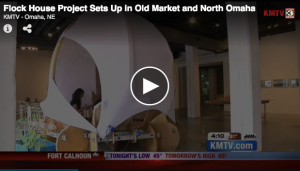 Justin Pazera, of KMTV in Omaha speaks to Mary Mattingly and Amanda McDonald Crowley about Flock House Project Omaha.
Justin Pazera, of KMTV in Omaha speaks to Mary Mattingly and Amanda McDonald Crowley about Flock House Project Omaha.
by Justin Pazera CREATED May 8, 2014
News article is available on the KMTV site.
Justin Pazera returned to the Old Market to talk with us as the Flock House Omaha was being installed.
Mary Mattingly: Flock House Project: Omaha
Mary Mattingly: Flock House Project: Omaha
Mary Mattingly’s Flock House Project: Omaha, was a city wide workshop and exhibition developed during her residency at the Bemis Center for Contemporary Art, in Omaha, Nebraska.
What if migratory homes with autonomous systems for rainwater collection and food production were the building blocks of the city of the future? Inspired by patterns of global human migration and pilgrimage, the Flock House Project is a group of mobile, sculptural, public habitats and self-contained ecosystems that are movable, modular, and scalable.
This multi-phase project was part fantastic and part practical. It kicked off in Omaha on March 13, 2014, with an exhibition of Mattingly’s work at the Bemis Center. The exhibition included selected works from her Island (2009-2011), Anatomy of Melancholy (2007-ongoing), Second Nature (2006), Nomadographies (2009-2011), House and Universe (2013); and Wearable Portable Architecture (2011) bodies of work, as well as new works for her Tools series made at the Bemis Center. The centerpiece for the exhibition was one of the three portable structures from her 2012 Flock House Project, New York City.
Mary Mattingly: Flock House Project: Omaha exhibition brochure.
Unlike traditional exhibitions, however, the spaces also served as the artist’s active research hub while she was in residence at the Bemis Center, offering a space where she engaged the local community to develop plans for, and fabricate, new mobile living systems to be installed outdoors at both the Bemis Center in the Old Market and at Carver Bank in North Omaha. Omaha artists were then invited to occupy these living systems in order to promote and implement a broader integration between Omaha’s creative and urban design communities.
At a time when urban populations are faced with environmental, political and economic instability, dislocation and relocation become increasingly important to consider and reconcile. Addressing these themes and concerns, Mattingly first presented three Flock Houses across New York City during the summer of 2012. Her intention is to choreograph Flock Houses throughout urban centers across the United States. By constructing them, she seeks to enhance community-based interdependence, resourcefulness, learning, curiosity and creative exploration. Interactive community programs, workshops, lectures, performances and narrated tours focusing on Omaha’s history, current surroundings and future opportunities occurred throughout the summer. By engaging in a direct dialogue with Omaha’s history of community and innovation, the Flock House Project provided local residents and visitors with an opportunity to ponder the future of urban living.
During May 2014 a series of design/build workshops was held to develop a local iteration of her Flock House Project. Omaha residents had an opportunity to consider just how our urban landscape might look in the decades to come.
Mary and I talked with Justin Pazera of KMTV about the project.
Two Flock Houses were installed over summer in Omaha’s Old Market district and at Bemis Center’s Carver Bank location in North Omaha. To read about the process and about the participants’ experiences, visit the Tumblr account here.
For a listing of Old Market Flock House projects, click here.
For a listing of Carver Bank Flock House projects, click here.
Gallery Installation Shots:
Flock House Omaha design build:
Flock House Project: Omaha was developed through Design/Build Workshops in May 2014. During the workshops, the following people worked alongside Mattingly to create and install both the Old Market and Carver Bank Flock Houses:
Travis Apel: Artist/Organic Gardener/Builder
Dwayne Brown: Architect /Writer for Edible Omaha
Denise Chapman: Carver Bank Artist-in-Residence/Performer
Devel Crisp: Carver Bank Artist-in-Residence/Performer
Matt Cronin: Gardener/Community Activist
Tricia Custer: Video Production/Artist/Gardener
Angela Drakeford: Artist
Chance Frank: Artist/Gardener
Matt Freeman: Community Gardener
Cynthia Gehrie: Artist/Gardener
Neil Griess: Artist/Urban Activist
Catherine Harrington: Gardener/Builder/Cook
George Hewitt: Artist, Post Hurricane Katrina Rebuild Volunteer, Furniture
Dr. David J. Hibler, Sr.: Gardening, Community Activism
Maya Jeffereis: Bemis Center Artist-in-Residence/Installation/Sculpture/New Media/Performance
John Kerner: Architect/Artist
Jennifer Keys: Drawing/NAACP
Kim Reid Kuhn: Artist/Urban Activist/Teacher
Peter Langwith: Artist/Community Activist/Sustainable Living
Kayla Meyer: Landscape Architecture
Christina Narwicz: Artist/Gardener
Linn Norton: Art Education
Sarah O Donnell: Bemis Center Artist-in-Residence/Sculptor
Katie Parker: Bemis Center Artist-in-Residence/Sculptor
Dessi Price: Graphic Designer
Terri Sanders: Great Plains Black History Museum
Dr. Daniel Schober: Heath/Nutrition
Tyler Swain: Trash/Recycle Artist/Tinkerer/Construction
Travis Thieszen: Bemis Center Artist-in-Residence/Sculptor
Susan Thomas: Arts/Omaha Creative Institute
Liz Thrash: Gardener/Hobbyist
About Mary Mattingly:
Mary Mattingly is a New York City-based artist whose work has been supported by the James L. Knight Foundation, Eyebeam Center for Art and Technology, Yale University School of Art, the Harpo Foundation, NYFA, the Jerome Foundation and the Art Matters Foundation, among others. Mattingly has been featured in Art in America, Artforum, Dwell, China Business News, The New York Times, New York Magazine, Financial Times, New Yorker, The Wall Street Journal, and the Village Voice. Mattingly’s efforts have also been covered by BBC News, MSNBC, Fox News, and on Art21’s New York Close Up series.
The artist merges performance, sculpture, architecture and photography to address issues of home, migration, cartography and living systems. She creates photographs and sculptures that depict future and obscure landscapes, makes wearable sculpture, “wearable homes,” and ecological installations. Her work has been exhibited at the International Center of Photography, the Seoul Art Center, the Bronx Museum of the Arts, the New York Public Library, deCordova Museum and Sculpture Park in Massachusetts and the Palais de Tokyo. Mattingly participated in smARTpower: an initiative between the U.S. Department of State and the Bronx Museum of the Arts as artist-ambassador to the Philippines.
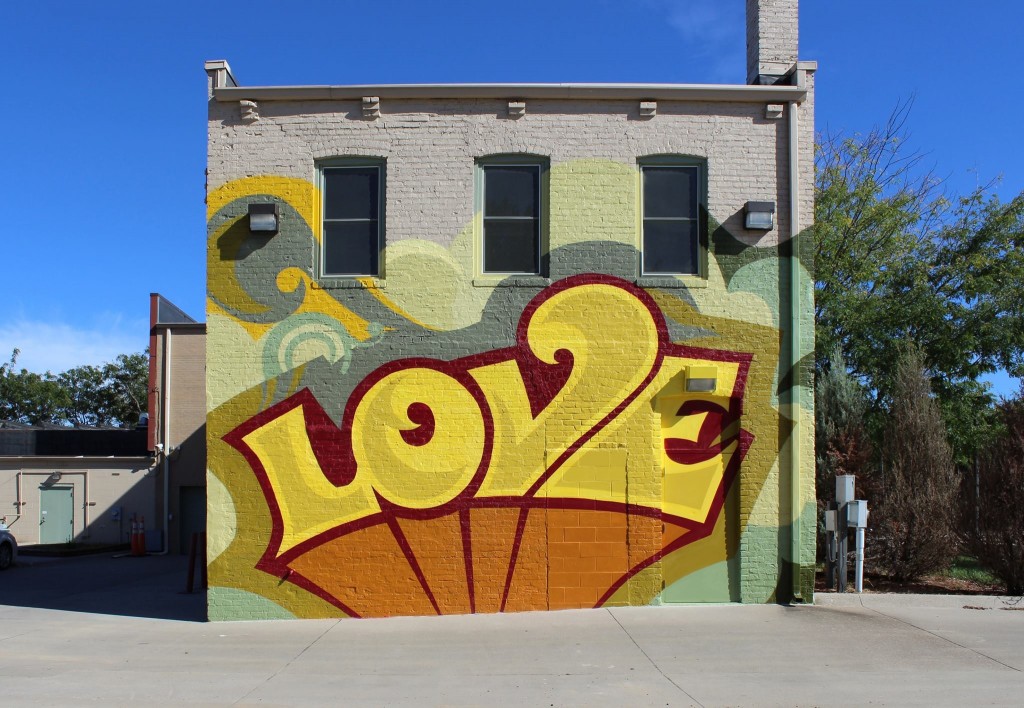
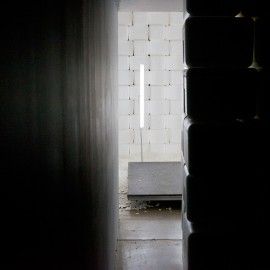
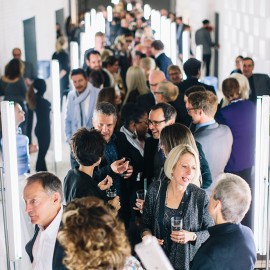
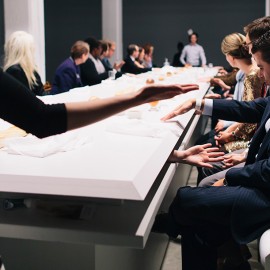

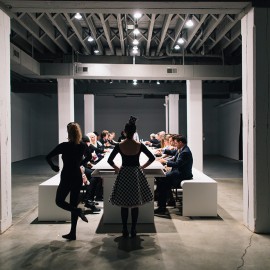
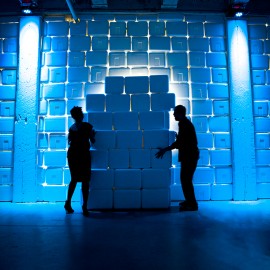



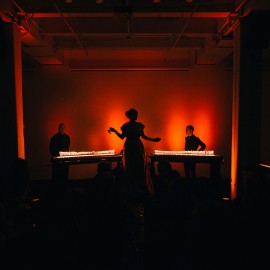
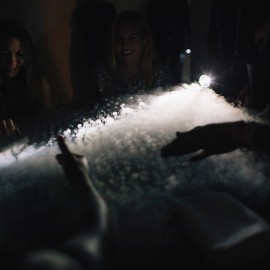


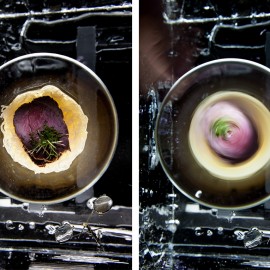

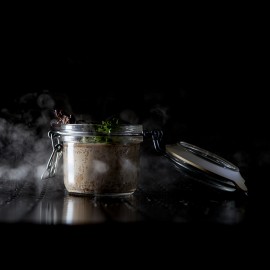




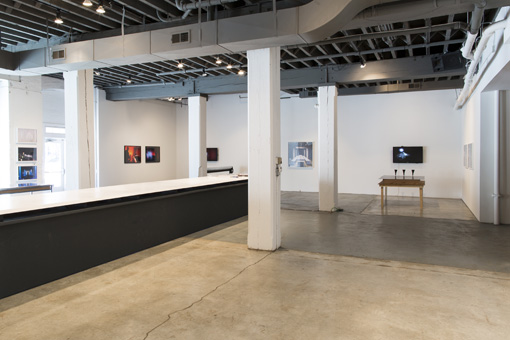

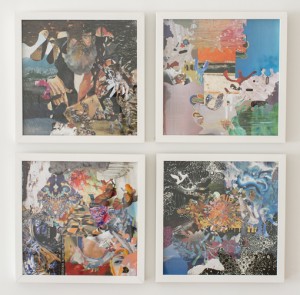
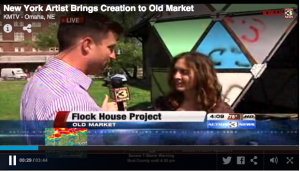
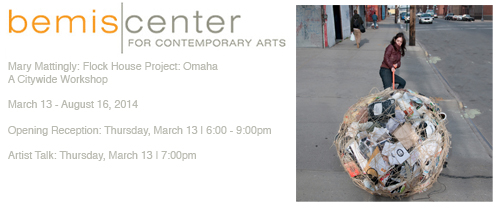
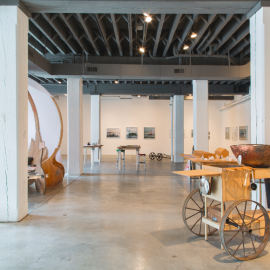
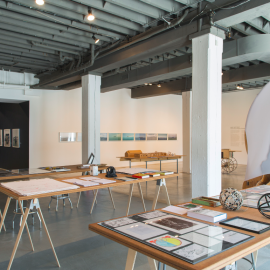
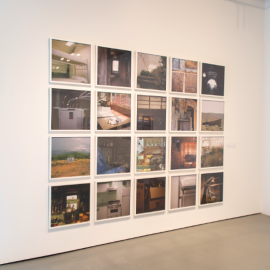
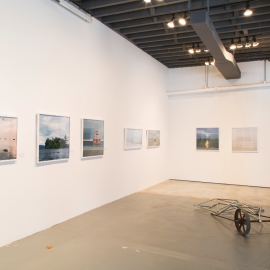
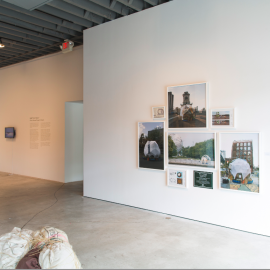
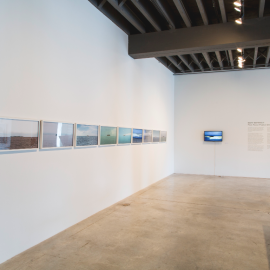
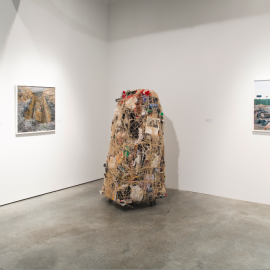
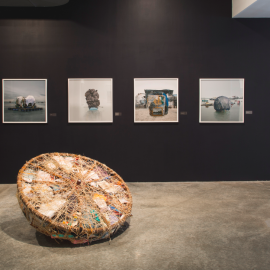
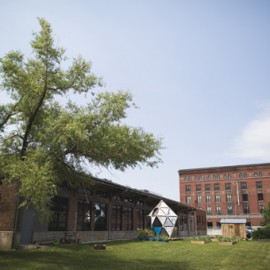
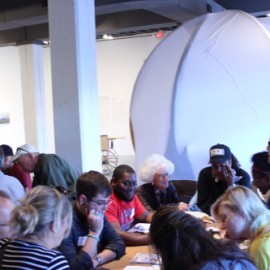
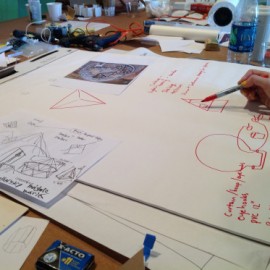
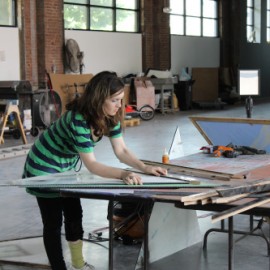
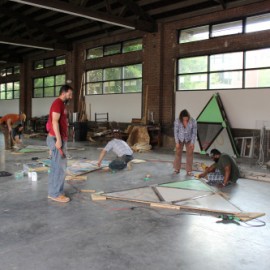
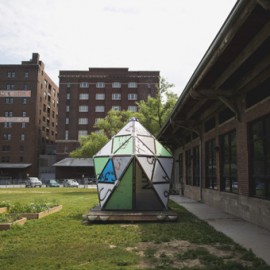
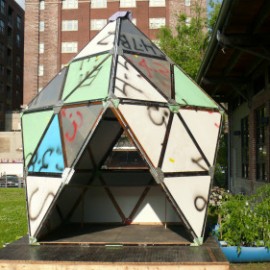
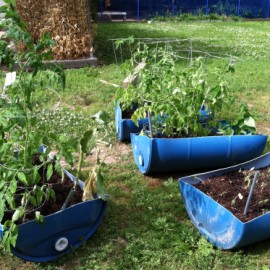
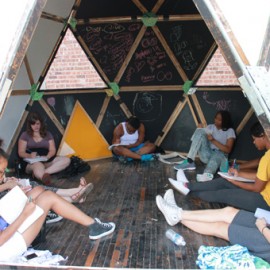
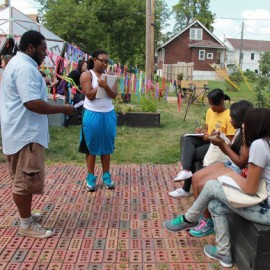

You must be logged in to post a comment.